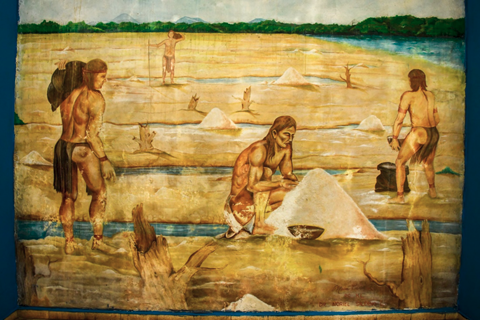SALT FLATS – Making salt from the sea
- Sue Makinen and Kathleen Howard
- Mar 30, 2022
- 2 min read

Salt production in Panama is largely a manual labor job. Salt flats, where salt is extracted from sea water, are mostly located along the Pacific side in Los Santos, Herrera, and Cocle provinces.
Salt extraction dates back to pre-Columbian days in the Cocle province. The photo below is a painting located in the Salt and Sugar Museum in Aguadulce. If you decide to visit, it has actually been renamed the Museo Regional de Aguadulce Stella Sierra. Ask for Daniel as your guide – a most knowledgeable guide with quite good English.

When they started using pumps and a system of water gates to control the flow of salt water into the flat areas, the production jumped greatly. The engineer mostly responsible for the improvements in methodology was Manuel Maria Campos in 1911.

Beds are made lined with plastic and a small wall around the outside to contain the water. A pumping system is used to pump seawater into the beds. As the water evaporates, more water is added until there is a heavy concentration of salt. This takes about 4 to 6 days. Then the salt is scooped to the side and out into piles to dry some more.

Using a specially designed paddle, the salt is pushed to the side of the bed and out into piles where it continues to dry out for at least 48 hours.

After it is dry enough, it is put into sacks and piled up ready to be hauled to the salt company where it Is further processed, purified and have iodine added in some cases.
In 2018, the Central American country produced approximately 17.3 million kilograms of salt.
In 2019 Panama shipped 4 tons of table salt. Panama is 26th in world exports of table salt.

Link to video in Spanish by Sal Solar company about salt making. https://www.youtube.com/watch?v=SfE4FUU-9sE







Comments